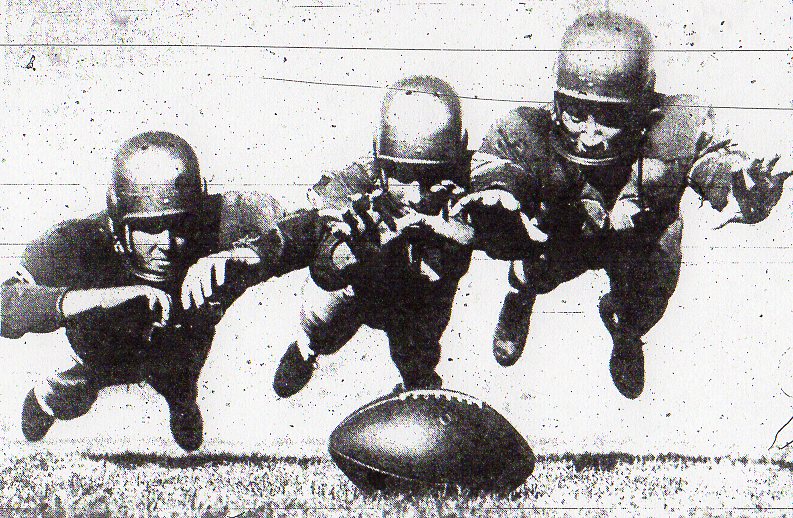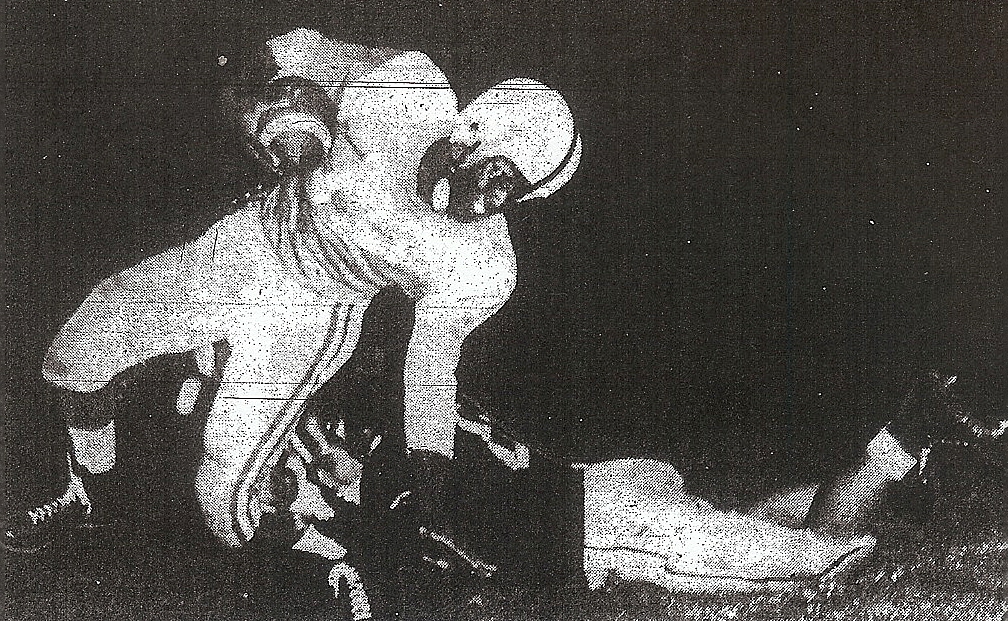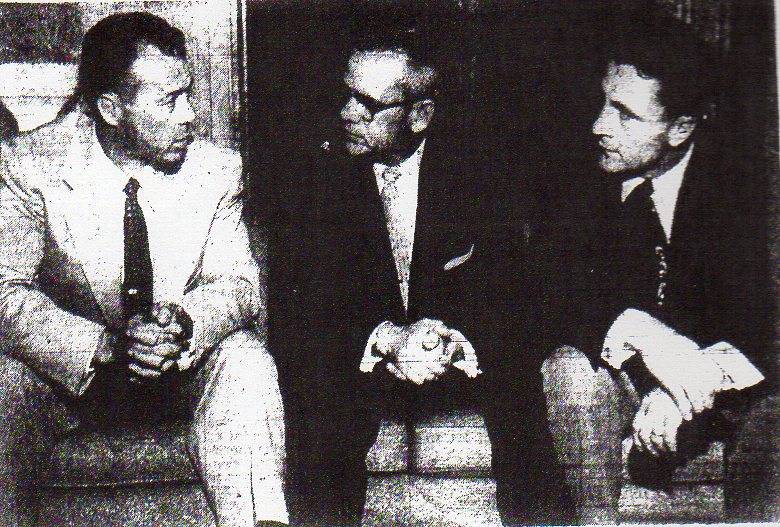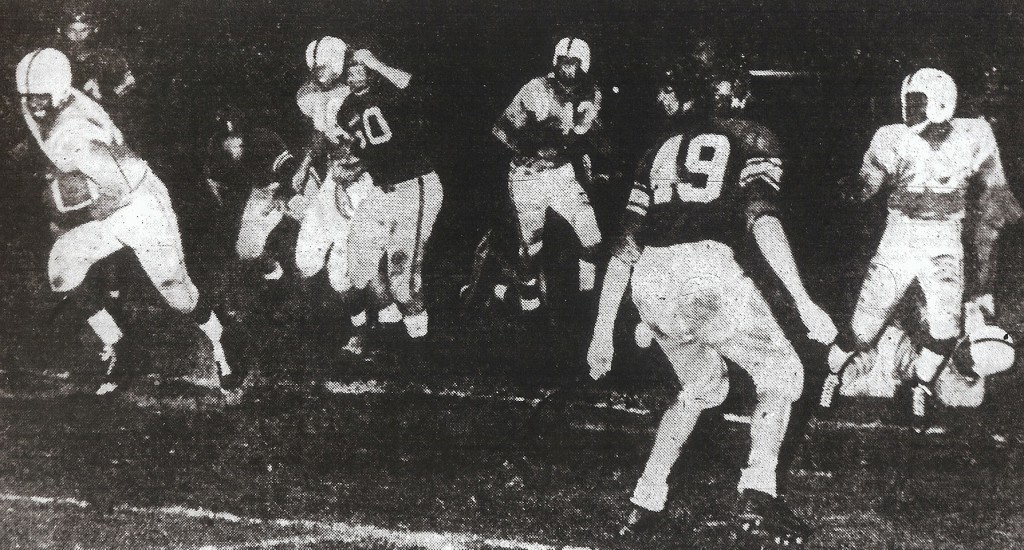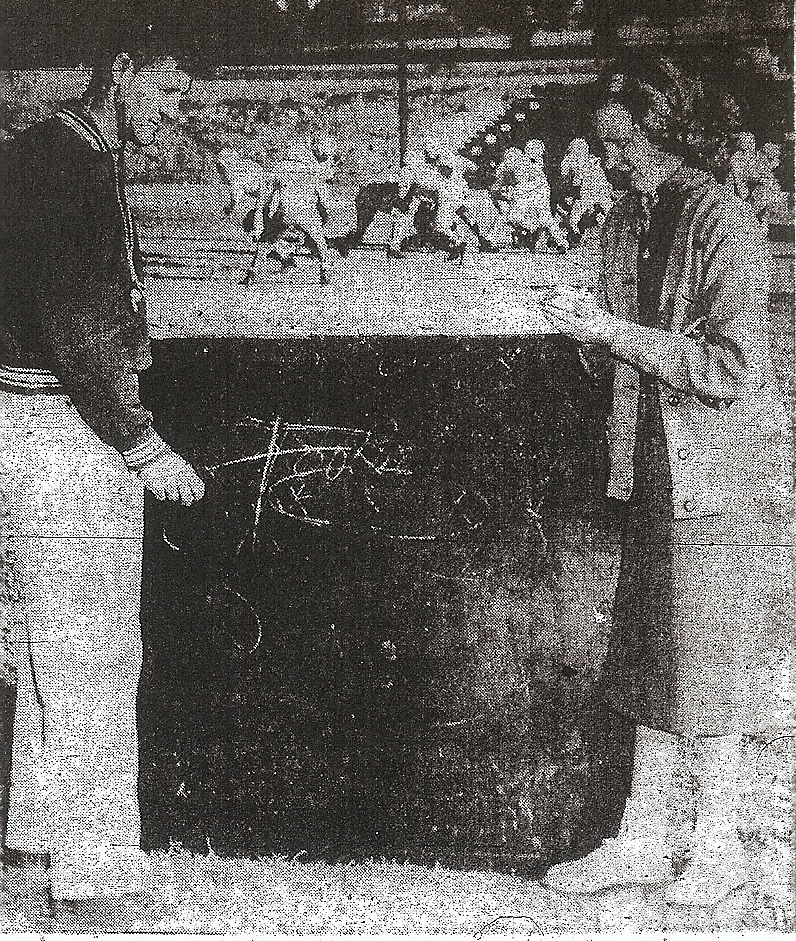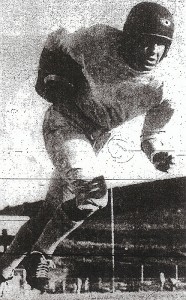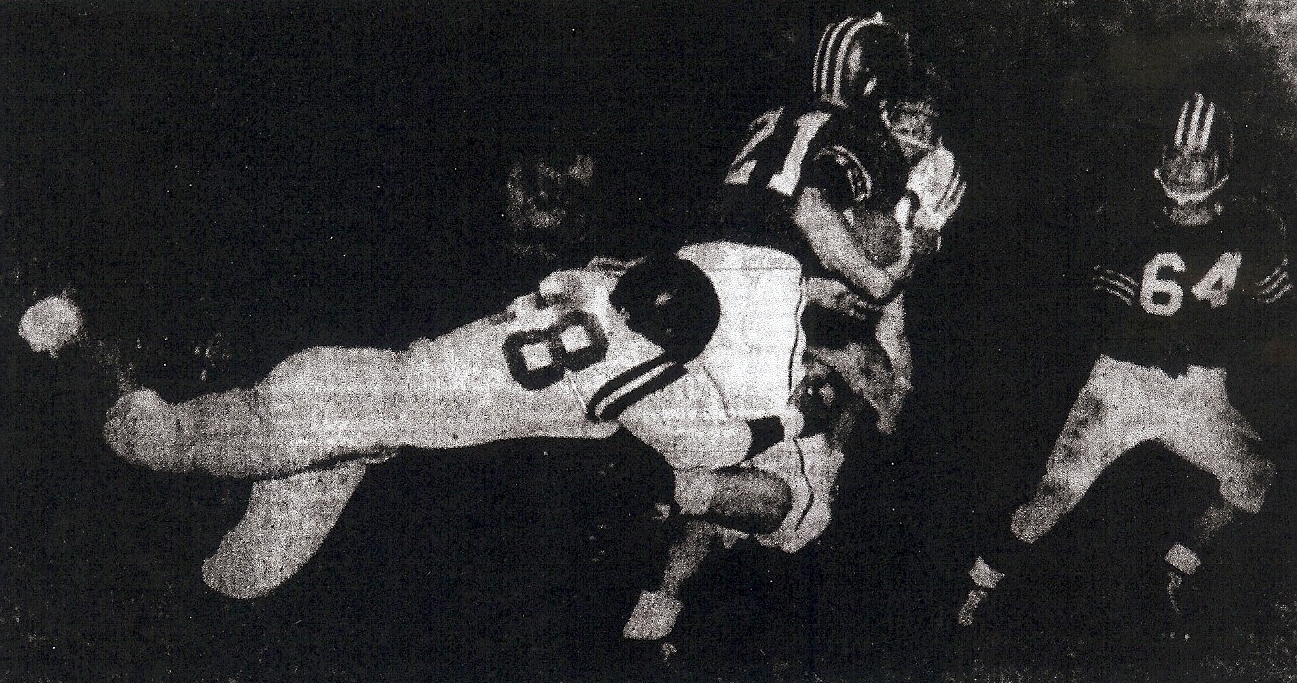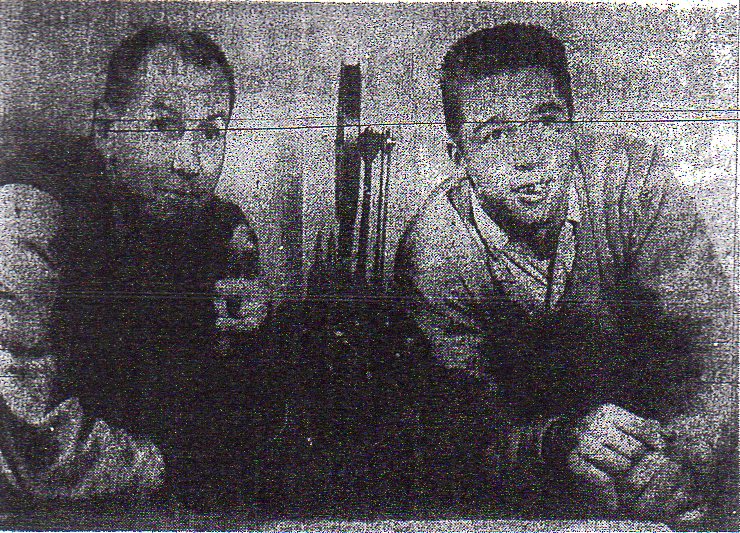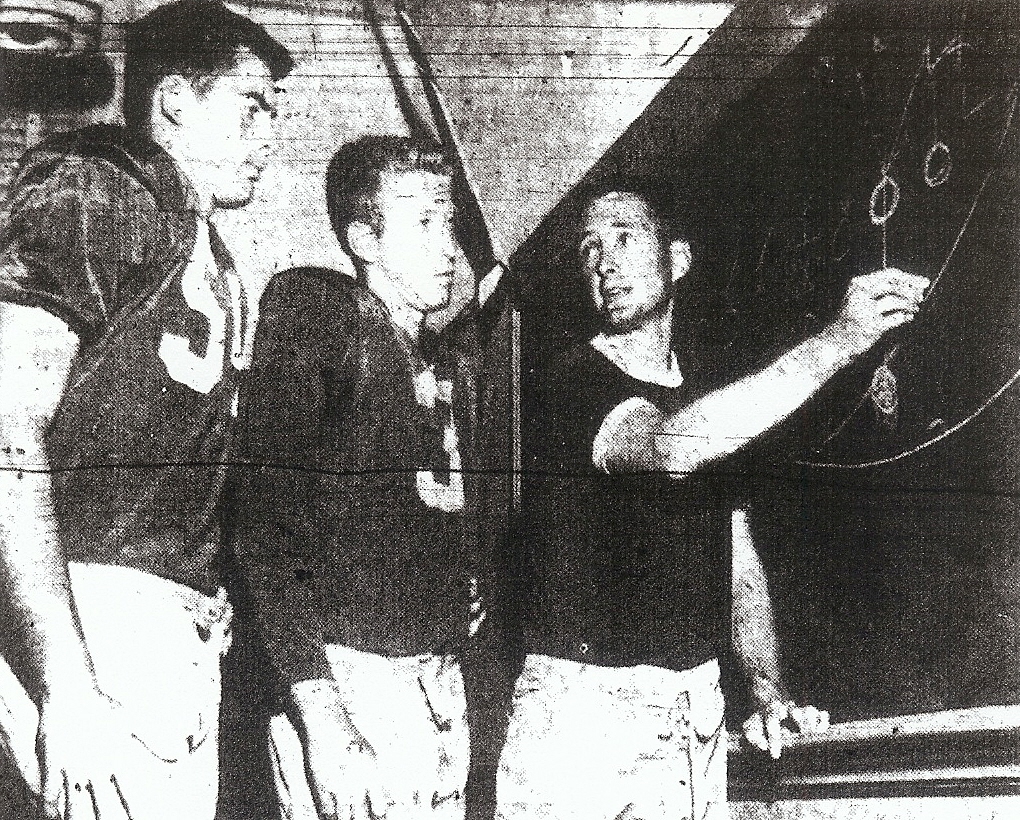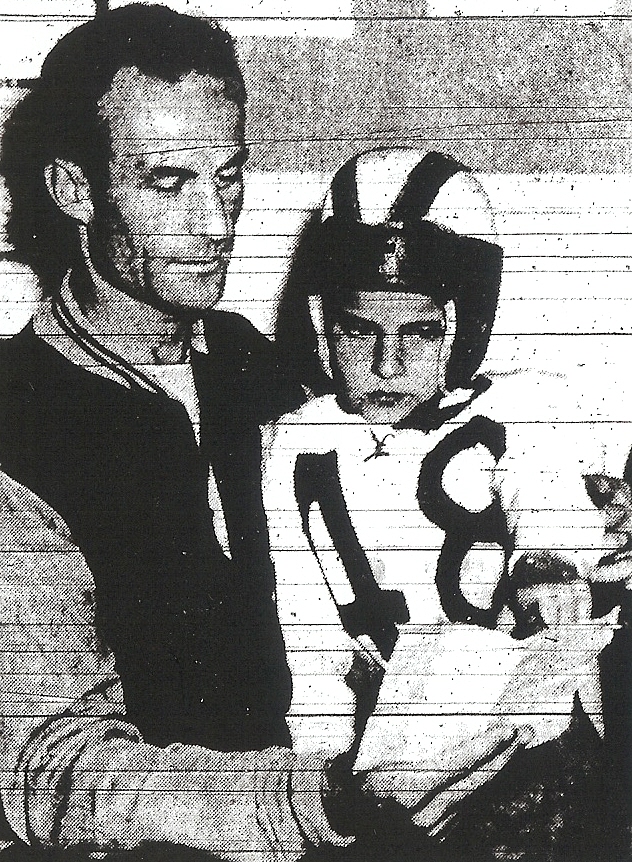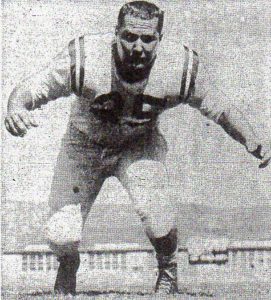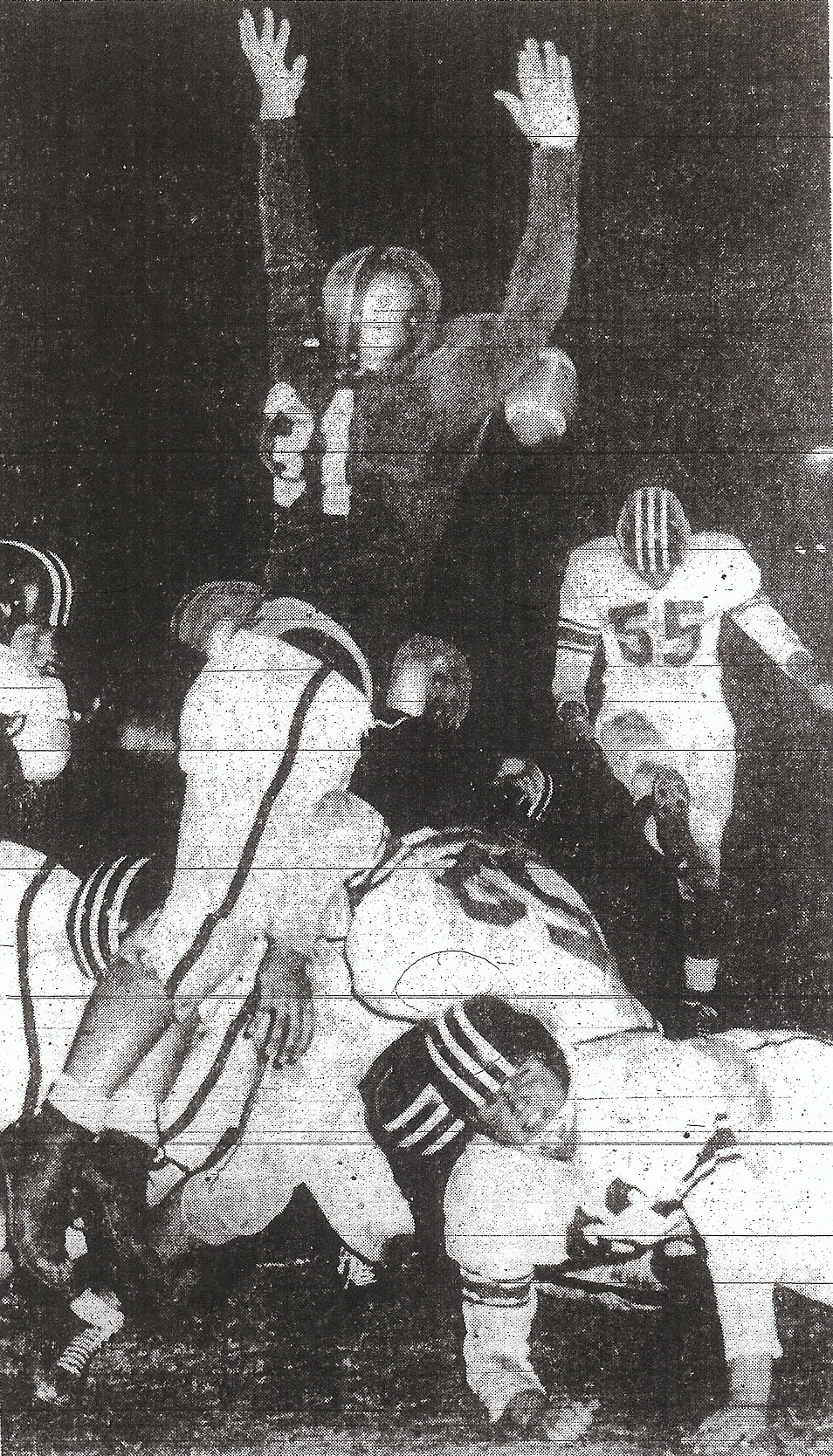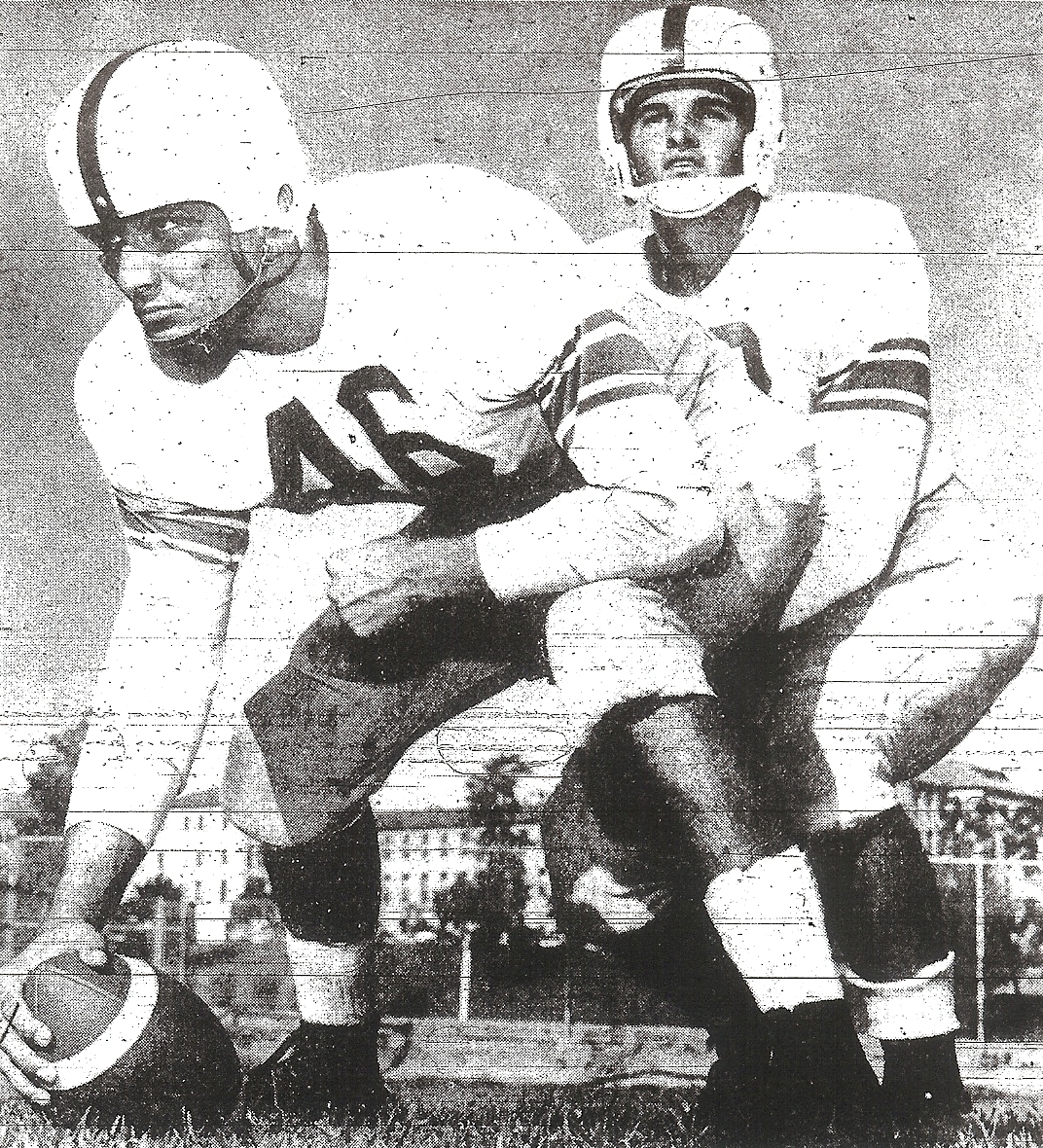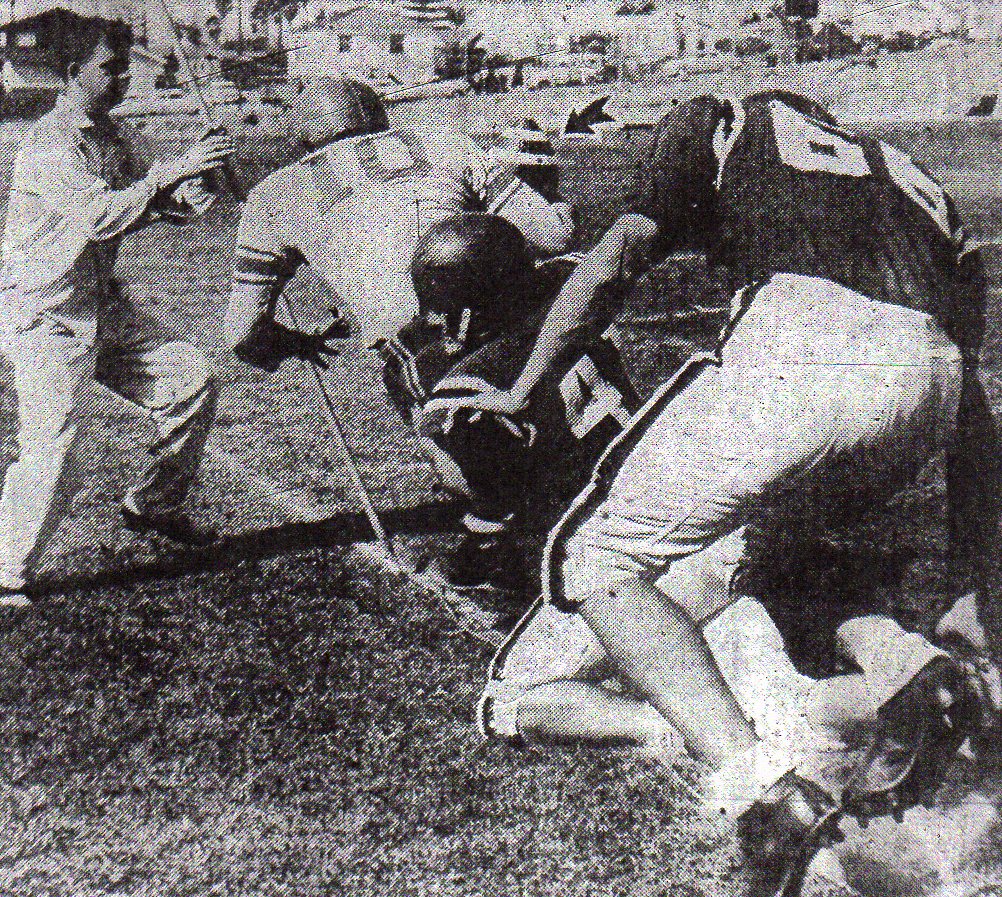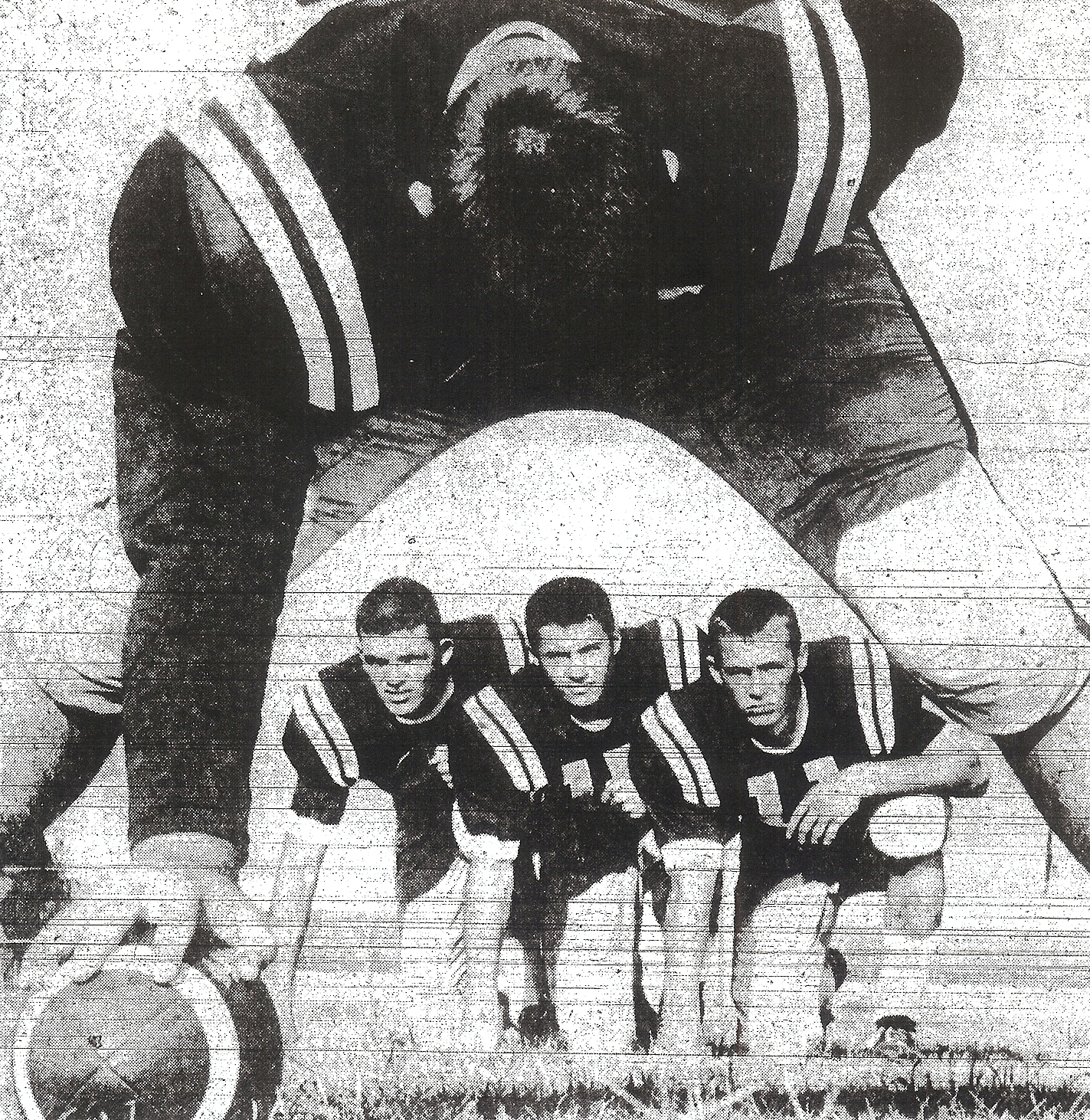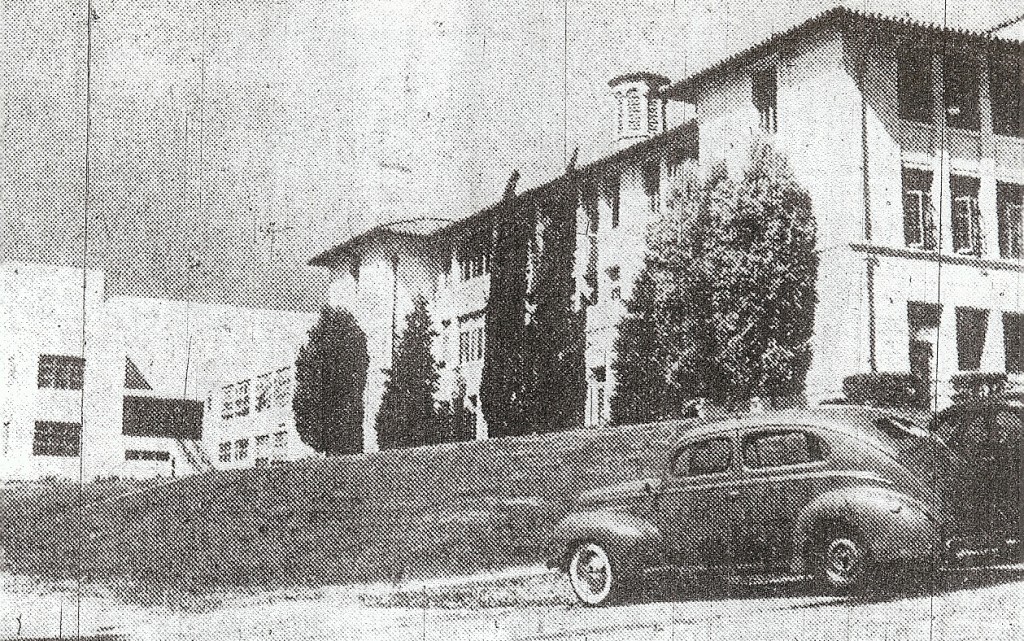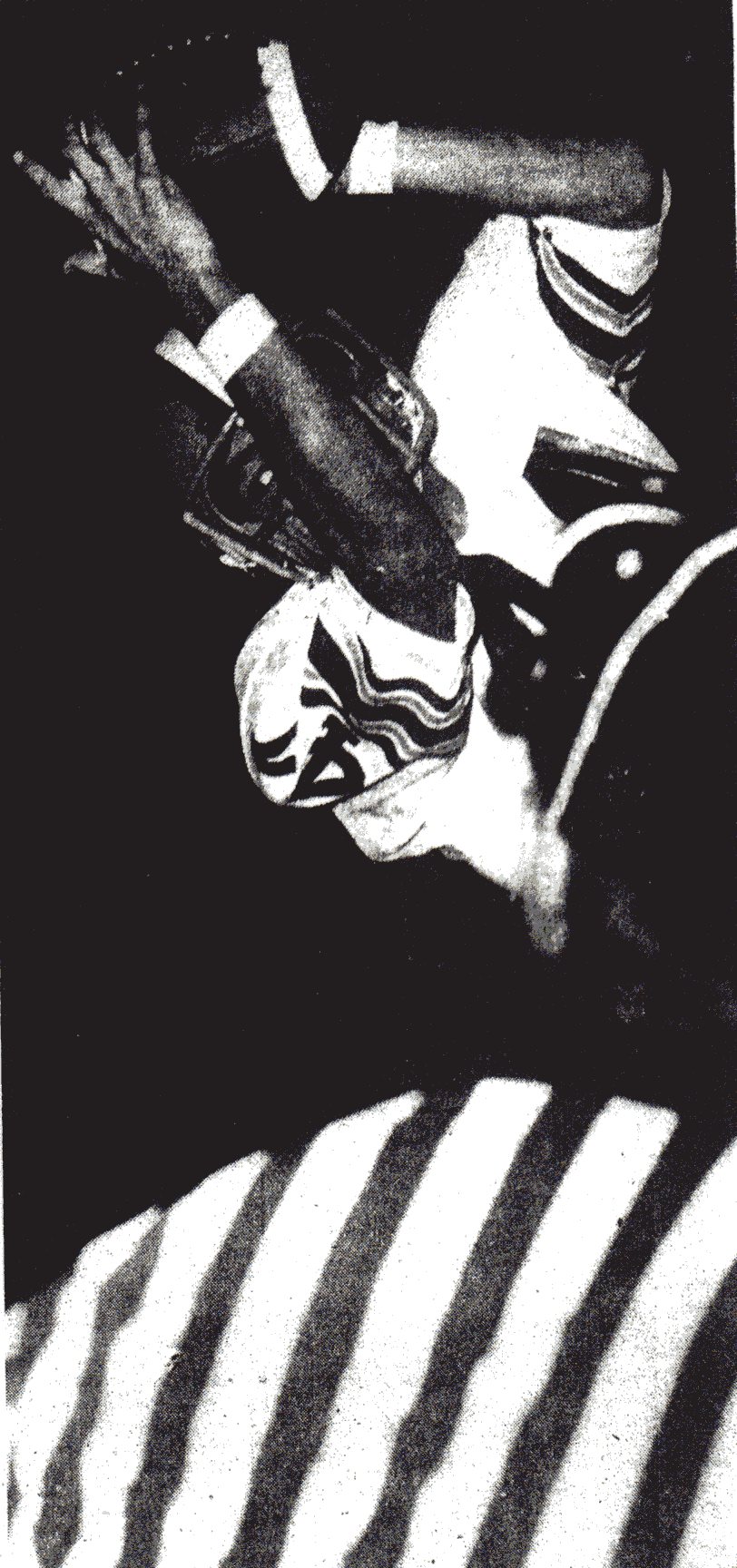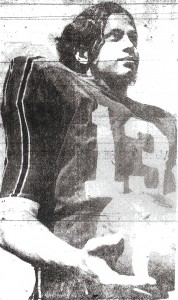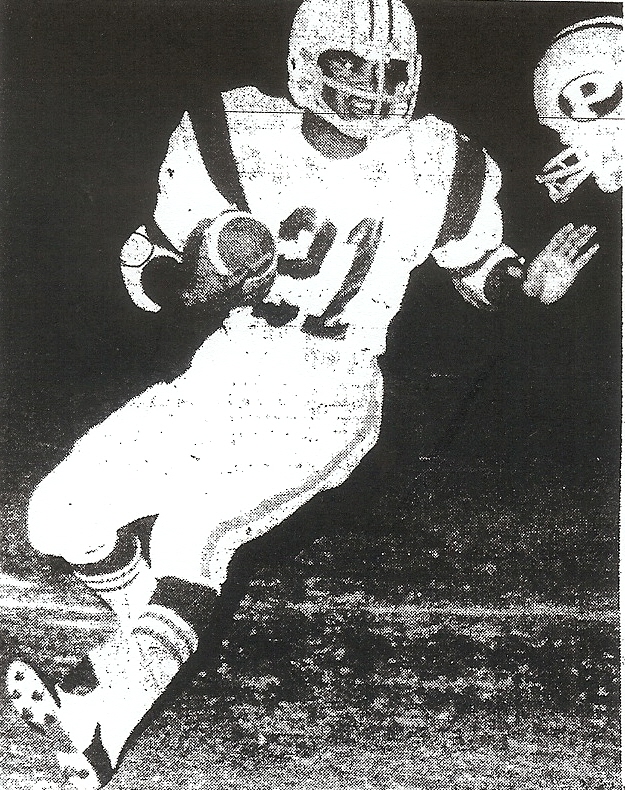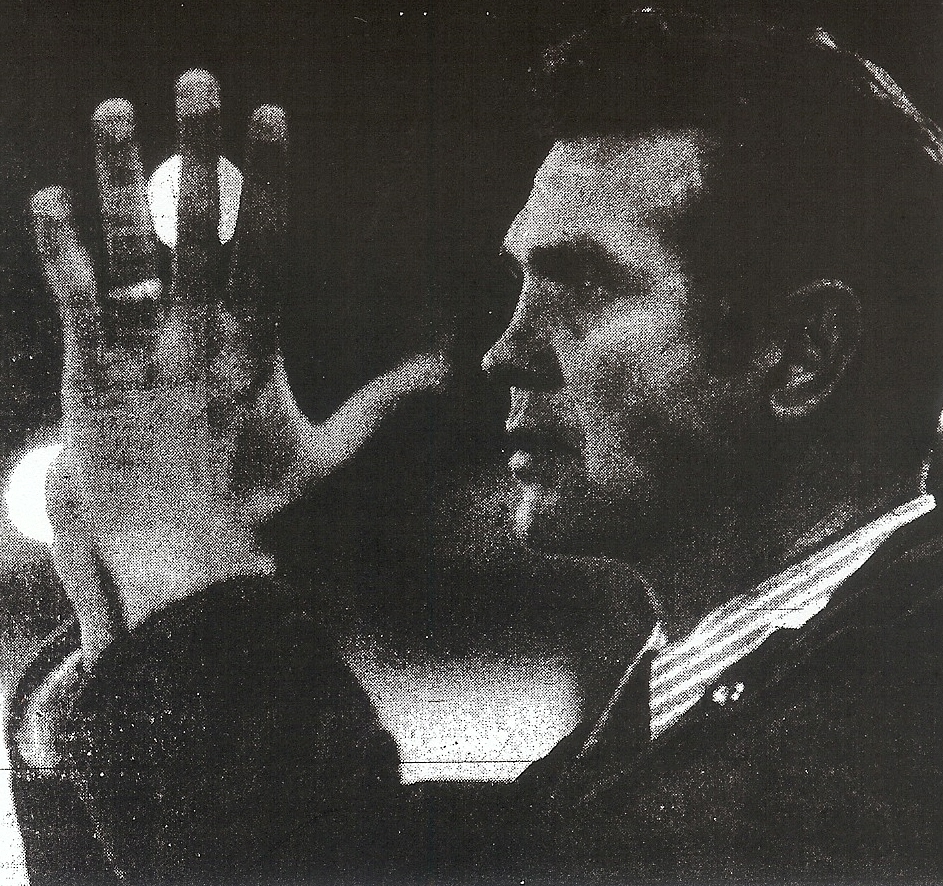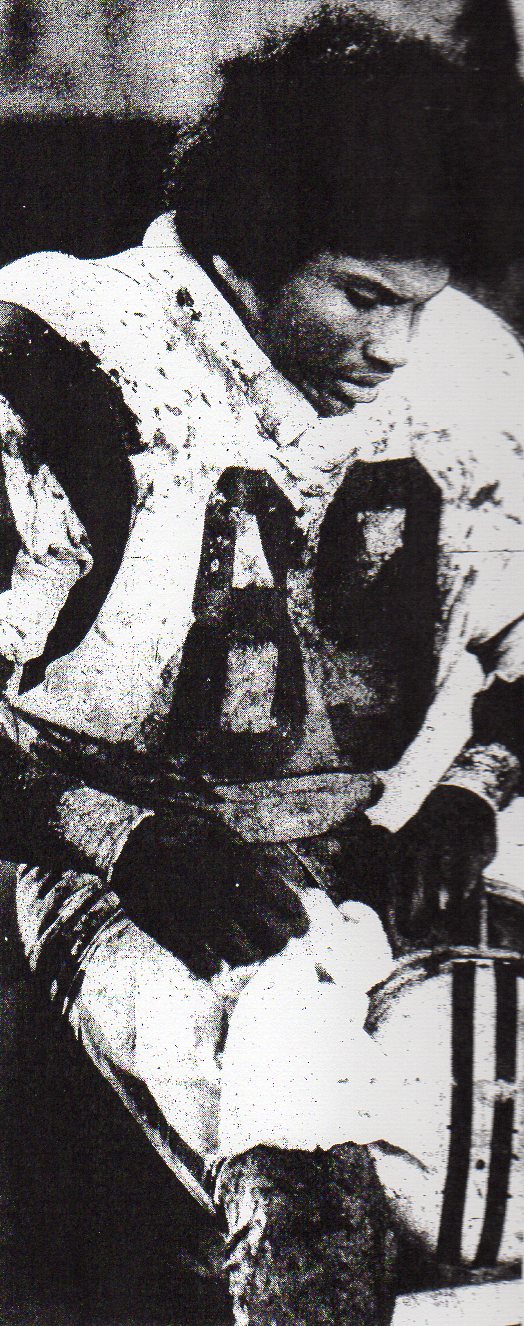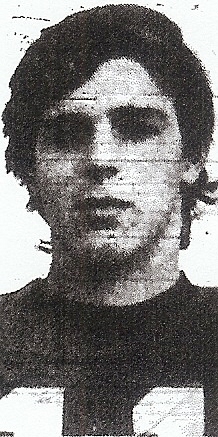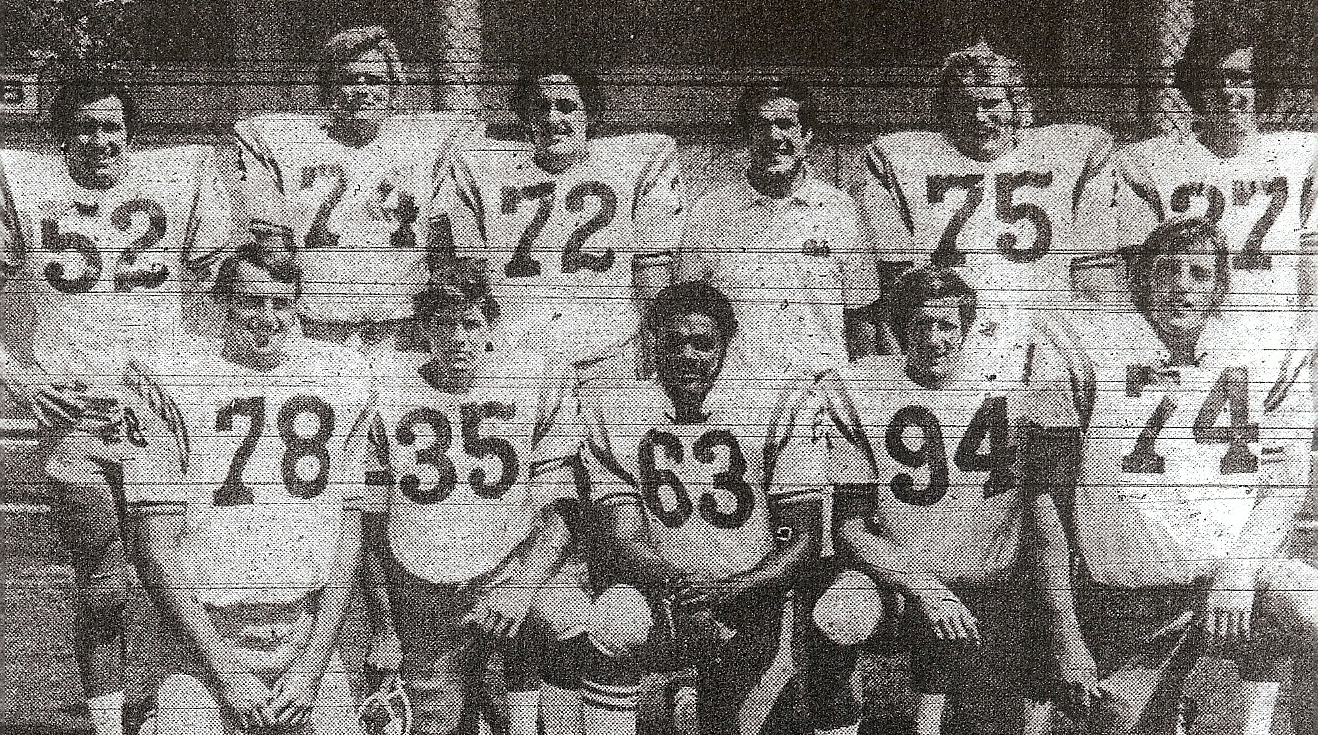1979: Eighteen Hours Later Komets Emerge as Winners
Kearny High and Point Loma kicked off at 7 p.m. on Friday, Oct. 26, 1979, and the Komets clinched a 9-6 victory on Oct. 27, 1979, about 18 hours later.
Five seconds remained on the clock when the Komets’ Jim Goosens attempted the first field goal of his life and booted a 25-yard placement that sent everyone home.
Mother Nature, with a little help from the officiating crew, created this prep football time warp.
It was pouring rain. “A bolt of lightning struck a transformer,” remembered Komets coach Tom Barnett. The lights went out at Mesa College.
But the show must(?) go on, and did.
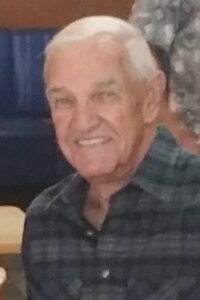
After assessing the situation for about 15 minutes, game officials, coordinated by referee Ed Olsen, met with coaches Tom Barnett of Kearny and Bennie Edens of Point Loma in the middle of the field, rain continuing to come down, images barely visible.
Olsen directed the teams to regroup, head home, and return to Mesa the following day at 1 p.m. and to pick up where action left off, 11:19 to play in the fourth quarter, Kearny ahead, 6-0.
Darkness engulfed Linda Vista after the Komets’ Mark Reeves scored on a two-yard run on the last play of the third quarter and following a missed point after.
Rain still was falling when play resumed the next day.
FINALLY
Point Loma struck with a 78-yard pass play, Bill Waller to Pete Harris, but also missed the point after. The score was 6-6 until Goosens toed his winner and avoided the additional stress of a tension-filled overtime period.
For the second time in two days the Komets began drying out after the walk back to school.
Kearny is about a quarter-mile from Mesa. Head coach Birt Slater started a tradition when the Komets began playing in the new community college’s facility in 1964. They strolled to and from home games.
Kearny squads dressed out at school, and then walked to the stadium, entering from the south end to the cheers of their fans, always after the visiting team was on the field in its pregame warm-up.
FLASHLIGHTS, ANYONE?
“We had to walk back in the rain that night and all of the lights were out in the gymnasium,” said Barnett, who succeeded Slater in 1977.
The Komets saw the light, somewhat, after Barnett and his coaches asked a school custodian to find some illumination.
“You could hardly see your hand in front of your face,” the coach told writer Jerry (Sigmund) Froide of the Evening Tribune. “We had to use flashlights so the kids could find their lockers.”
Players struggled to take off their wet and muddy uniforms in a maze of sweat and steam as the locker room quickly humidified, then they headed home to have the gear washed and dried for the next day.
“There never was any thought of not playing Saturday,” Barnett said. “If we hadn’t the game would have been wiped out. It would have been declared a non-game, since there would have been no chance to replay it later on. But I credit the officials. They could have called it off.
“We also had to get the field re-lined and get permission to use the stadium again,” Barnett said. “Mesa had a game that night.”
Olsen remembered the moment as if it were yesterday.
“Finishing was the right thing to do,” Olsen said. “I was told later that I was supposed to have contacted the commissioner (Kendall Webb) for his okay, but my only thought was that these players and coaches would have put all that effort into nothing.”
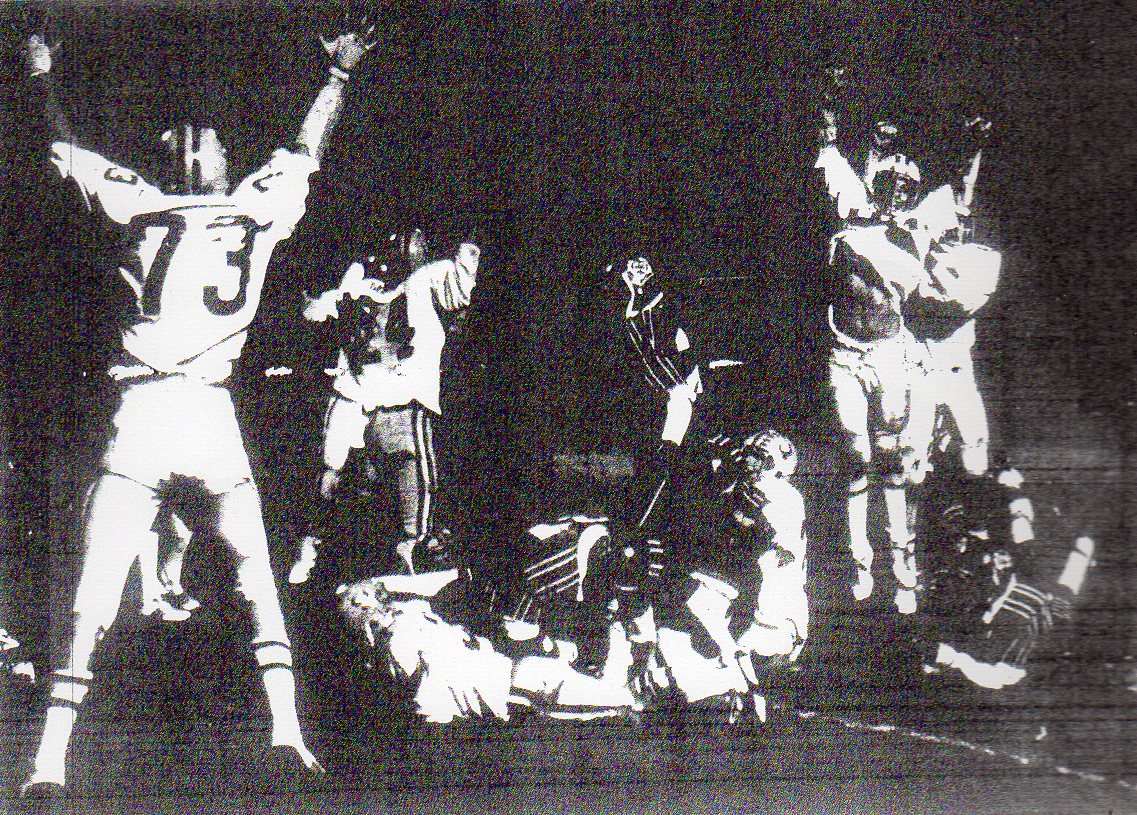
KEARNY “WALK” SIMILAR TO CAVERS’
Birt Slater was an assistant coach to Duane Maley from 1953-57, an era of remarkable success at San Diego High. City Prep League opponents’ combined record against the Cavemen was 1-27.
Almost all of the Cavers’ league games were in Balboa Stadium, located on the school campus. Maley’s squads dressed in the school gymnasium, steps from the stadium, and then walked up an incline to the North end, which offered a panoramic view of the 23,000-seat facility.
From the top of the stadium steps, the Cavers descended in single file, passing between the school’s flag corps and its formed “SD”, then ran to their bench amid cheers and hoopla.
Only fireworks and skylights were missing. The visiting team, already in its pregame warm-up, stopped to watch.
As a rival coach noted, “It was 21-0 before the coin toss.”
COMMANDING PRESENCE

Ed Olsen was a football official from 1968-96 but is best known for a life in baseball. He was captain of the Walt Harvey-coached 1953 La Jolla High squad that reached the Southern California finals before losing to Compton, 3-2.
Olsen was a bat boy for the Pacific Coast League San Diego Padres of the late 1940s and early ’50s, and coached more than 30 years at El Capitan High and Grossmont College, retiring in 2004.
LIKE FATHER, LIKE SON
Area schools profited from the arrival of the San Diego Chargers in 1961. In time sons of Chargers players and coaches contributed to the high school scene, especially this year.
–Ernie Wright, Jr., was a standout tight end at Patrick Henry.
–Tight end and future Grossmont quarterback Jeff Van Raaphorst was son of Dick Van Raaphorst, former Chargers placekicker.
–Helix’ cornerback Kevin Durden was second of three sons of Earnel Durden, Chargers running backs coach.
–Longtime Chargers center Sam Gruneisen’s son Scott, punted and played tight end for Granite Hills.
–Chargers special teams coach Wayne Sevier’s son was Sweetwater quarterback Thane Sevier, who played the same position as did his dad at Sweetwater in 1958.
–Granite Hills quarterback Ladd McKittrick’s father left the Chargers’ coaching staff this year to begin a long and Super Bowl-successful career with the San Francisco 49ers.
Granite Hills was very much into the second generation mode. McKittrick and Gruneisen were joined by three brothers whose father had been one of the County’s top players.
Joe Klucewich, Jr., and his identical twin brothers, Josh and Jim, were the sons of Joe, Sr., an all-Metropolitan League halfback at El Cajon Valley who led the league in scoring with 11 touchdowns and 66 points in 1956.
Joe, Jr., took dad a few steps further, rushing for more than 1,000 yards and scoring 13 touchdowns and 80 points and had a touchdown and 110 yards in 21 carries in the big regular-season game against Helix.

WHERE EAGLES DARE
Granite Hills snapped the top-ranked Highlanders’ 12-game winning streak, 17-15, in a November showdown and went through the Grossmont League with a 7-0 record.
His team clinging to a 14-9 lead, McKittrick completed a nine-yard pass and scrambled 8 and 23 yards to keep alive a 75-yard drive that used more than six minutes of playing time and ended with a 35-yard field goal with 1:19 remaining to give the Eagles a 17-9 lead.
The field goal was more important than icing on the cake.
Helix scored with 54 seconds left. Jim Plum pitched behind the line of scrimmage to Gary Isaacson, who then connected downfield with Willie Williams for a 46-yard touchdown.
The Highlanders finally were put away when Casey Tiamalu was tackled short of the goal line on an attempted two-point conversion.
Granite Hills’ season came to a crushing end when the Eagles dropped a 28-7 decision to Morse in the 3-A championship game at San Diego Stadium. But their 10-1 record was a highlight of a decade-closing, five-year run in which the Eagles’ overall record was 47-6.
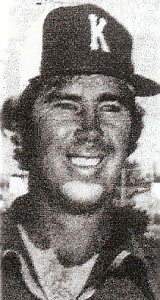
CAN’T HOLD THAT TIGER
No team closed the 1970s more impressively than John Shacklett’s Morse Tigers. Shacklett became head coach in 1971, got through a tough, early stretch (9-17-1 in his first three seasons) and was 51-10-4 from 1974-79, climaxing the decade in the 3-A championship game.
Morse advanced after an epic quarterfinals playoff at Helix.
The Tigers came from two touchdowns behind with 10 minutes remaining to tie the score in the final two minutes, 21-21. The California tiebreaker format was in use. Each squad got one possession of four plays, beginning at the 50-yard line.
Morse won the coin toss and chose to go on defense. Darrell Brown intercepted one of Jim Plum’s passes and Plum was incomplete on three others. Michael Johnson gained 13 yards for Morse and the Tigers won the tiebreaker.
“It was a helluva game,” said Shacklett. “No disrespect to Granite Hills, but Helix was the best team we played. They had Casey Tiamalu, Jim Plum, Leon White, some outstanding players.
“Tiamalu is one great back,” Shacklett told Jerry Froide, “but Michael Johnson has got to be the most explosive runner in the County,”
Johnson rushed for 136 yards, including 112 yards in the second half.
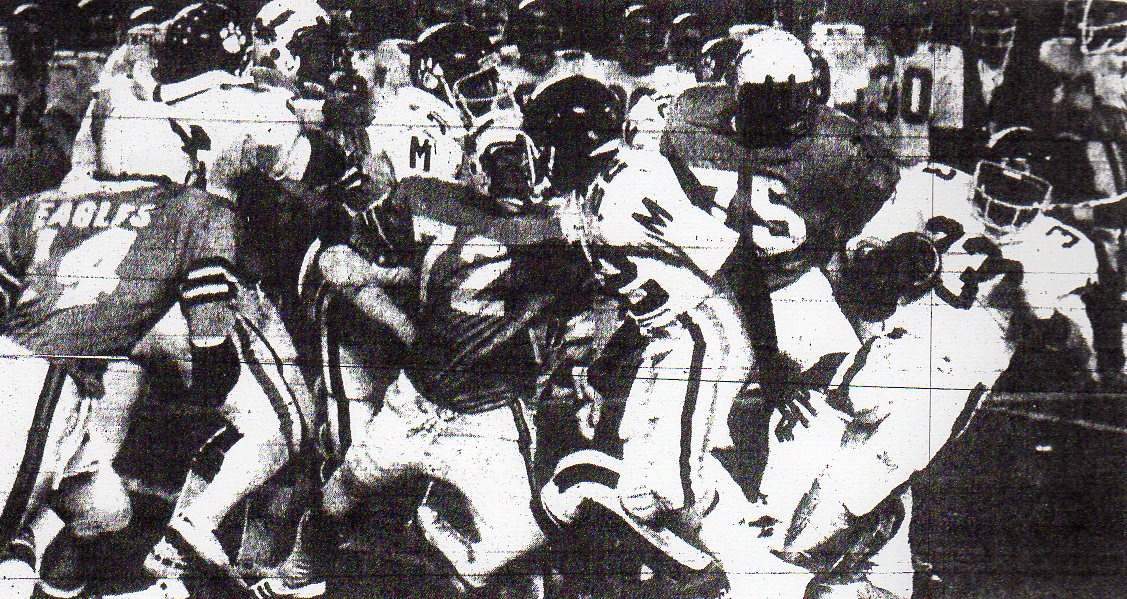
INACCURATE QUOTE OF YEAR
From Point Loma coach Bennie Edens: “Morse can’t lose that many good players (from 1978) and continue to dominate.”
NEW PLAYOFF FORMAT
For the first time since the San Diego Section was formed in 1960 champions in football, boys’ basketball and baseball no longer would be determined by two divisions of large school and small school classification. A new alignment of 3-A, 2-A, and 1-A, based on enrollment, would be in effect.
Crawford moved from the 3-A Eastern to the 2-A Western and Mira Mesa moved from the West to the East. The Avocado Conference was renamed the North County Conference and two leagues, Avocado (2-A) and Palomar (3-A) were created.
Schools did not change in the Grossmont and Metropolitan Leagues but the Grossmont became 3-A and Metro 2-A. Each league had 10 members and would be facing future realignment.
IF THEY FIRE YOU, JOIN THEM

Bob Woodhouse, who created AA and AAA monsters at San Marcos, then was canned by school district trustees after 14 seasons and a 94-36-1 record, announced himself a candidate for one of the trustee posts on the school board.
Woodhouse moved to San Pasqual 1977 in the Escondido school district but retained a residence in San Marcos, where, he said, school officials informed him during the 1975-76 school year that Woodhouse couldn’t be head football coach and athletic director.
According to the Evening Tribune, Woodhouse said he opted for the administrative post but also was denied that and then quit the district. Woodhouse said he had been accused during a stormy board meeting of unprofessional conduct in front of the student body. The board president denied making the charge.
Woodhouse retired after the 1985 season with a 59-30-4 record in nine seasons at San Pasqual. His overall record, one of the best in San Diego Section history, was 153-66-5 for a .702 winning percentage. Included were 10 playoff appearances, two championship appearances and one title, and an undefeated, 9-0 season in 1965.
Woodhouse was fourth in a field of nine with 1,978 votes in the San Marcos school board election.

WAGNER REBOOTS
Hilltop’s Bryan Wagner missed four field goals and a point after touchdown in a season-opening win against Montgomery.
“I was using a three-step approach like Tony Franklin (Philadelphia Eagles),” said Wagner, who went back to his normal approach the following week and crushed a 49-yarder at Coronado, the ball clearing Cutler Field and landing in an adjacent street.
Wagner later set a San Diego Section record with a 53-yard placement and was in the NFL for nine seasons, including the Chargers in 1994, and never attempted a field goal. He was a punter.
QUICK KICKS
Kearny (83-20-4), Sweetwater (83-21-3), and Vista (81-24) were the most successful teams of the 1970-79 decade…Lincoln was the 2-A champion and Army-Navy won the 1-A title… two other first-round playoff games were decided by the new tiebreaker: Patrick Henry edged Grossmont after a 13-13 tie and Escondido defeated Montgomery after a 7-7 deadlock… Shacklett, an all-Metropolitan League lineman at Grossmont in 1956, was on the same freshman team at Brigham Young University with Joe Klucewich, Sr… the Eastern League literally and figuratively was the Super League… the seven schools, Mira Mesa, Clairemont, Morse, Patrick Henry, Point Loma, Kearny, and Madison, averaged 2,368 students each…Patrick Henry was one of the largest in the state with 3,360 students in three grades… the new, 3-A, 2-A, and 1-A playoff alignment was based on enrollment and, with three divisions, the season was a week shorter… Sean Doyle, who would coach Cathedral Catholic to state championships in the next century, was a 170-pound defensive end at University… Point Loma graduate Bill Christopher, 28-8 in four seasons at Rialto Eisenhower of the Southern Section, took over at Mt. Carmel and was one of 12 new coaches in the San Diego Section… Helix sophomore Jim Plum completed 16 of 18 passes for 234 yards and two touchdowns against El Capitan, setting a San Diego Section record with an 88.9 completion percentage… on the season Plum threw for 12 touchdowns in 112 attempts… Orange Glen junior Sean Salisbury, a future NFL QB, threw for 18 touchdowns in 236 attempts… other future NFLers included Hilltop kicker Bryan Wagner; tackle Keith Kartz of San Dieguito; Carlsbad wideout Glen Kozlowski, a junior who led the section with 47 catches, and Helix linebacker Leon White… Lincoln quarterback Damon Allen would go on to a 22-year career in the Canadian League…Kozlowski, Salisbury, and Wagner were all-San Diego Section first-team choices…several other players went to NFL camps…San Pasqual’s offensive line was known as the “Hog Squad”, a few years before Chargers assistant coach Joe Gibbs, who would become the Washington Redskins’ head coach and coin his beefy forwards the popular “Hogs”… Hoover had 20 returning lettermen from a 1-8 squad and went 1-8 again… the Cardinals’ George Rios boomed a 68-yard punt, from his 15 to Kearny’s 17… Montgomery’s Gil Sanchez, all San Diego Section in soccer, kicked a football for the first time and his 42-yarder helped the Aztecs upset Sweetwater, 9-7… Clairemont’s 7-6 win over Kearny was the Chieftains’ first over the Komets since 1964…leading 33-0 and pitching its third consecutive shutout, Helix went to the air with 19 seconds left and Grossmont’s Mike Mathis intercepted and returned the pass 100 yards for a touchdown as the game ended….

